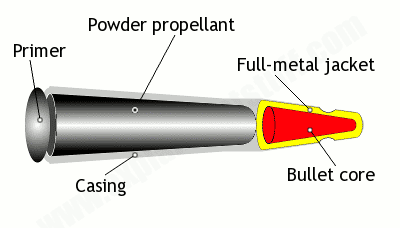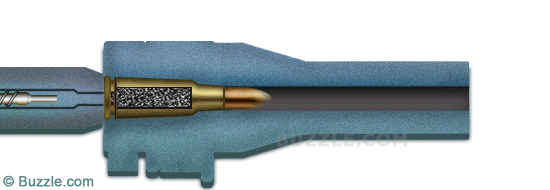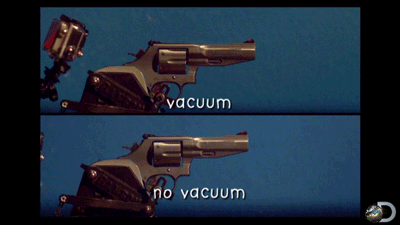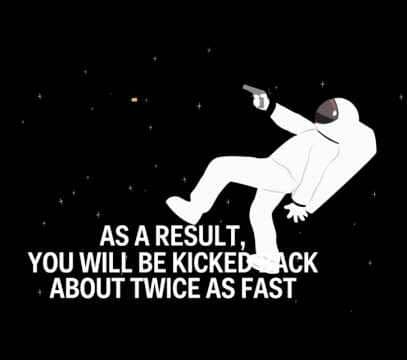Games and movies are filled with space warfare, and people would not be getting rich if we could get enough of it. However, you wonder once in a while if a gun in space works the same as it does on the earth. Would space weapons be any different than the ones we use here on earth? Let’s put the mystery to rest.
The vacuum does not effect the firing of a gun since oxygen is not required to fire the bullet. The gunpowder or any other explosive that the cartridge holds to fire the bullet is self-contained and is independent of the atmosphere. The primer holds its own flammable compound, other than gunpowder in the cartridge. The necessary oxidizer required to ignite the gunpowder is also self-contained, which means there is no reason for a gun to not fire in space. The cartridge does not allow the air to enter when properly packed, hence the chance of premature popping out of the bullet/cartridge in space is also out the window.

Let us see how the bullet mechanism works under the usual circumstances. Upon the pull of the trigger, the firing pin will strike the primer hard enough that it ignites the compound. The released flame will cause the gunpowder in the cartridge to explode. This will propel the bullet out of the gun since gunpowder burns rapidly creating an enormous amount of gaseous pressure buildup behind the bullet.

The gun in space may even work slightly better, according to Frank Heile, a Physicist at Stanford. In space, the bullet will be free of the need to push and compress the air in the gun barrel on its way out of the gun. Air resistance will not be a problem to slow down the bullet travel. Although being in orbit will cause it to curve, however, the orbit it was fired from will not be the same. There are two ways the bullet might react if fired outside the atmosphere. If it is fired in the same direction as the orbit, it may reach a more ‘eccentric orbit’ as Heile would call it.
“The bullet will always stay at or above the orbit of International Space Station” Heile says.
However, in the case where bullet is fired in the opposite direction of the orbit;
” The bullet may end up dipping into the atmosphere and therefore deorbiting” according to Heile.

There is no force in space that stops the gun from functioning properly. The mass difference of bullet and gun along with the person firing the bullet all add up to bullet gaining kinetic energy from the explosive, even though the amount of momentum they both experience will be the same. The astronaut will experience small angular momentum, due to the impact of the gunshot, because of his free-floating condition if the center of the mass of astronaut and the gun is not aligned with the line of the barrel.

According to Heile’s calculations, if the astronaut shoots the bullet from near his head, he might rotate once about every three minutes. The thrusters in the spacesuit which astronauts use for EVA Extra Vehicular Activities can fix that rotation. The other effect of firing multiple gunshots into space will be the cooling, the radiative kind, not the convective kind. The lubricants used in firearms may help in keeping the dryness out.
If the reasoning is not enough to convince you, there has been an incident where a gun was fired in space in 1974. At the Salyut-3 Space Station, a machine gun was test fired by the Soviet Union and the test went well.
Let us know what you think in the comments section below.



cool and true